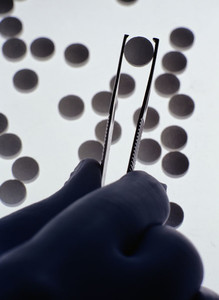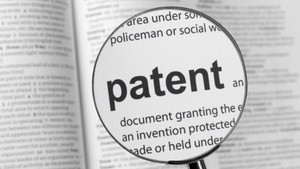A biosimilar of the low molecular weight heparin, enoxaparin, produced by Sandoz (Novartis’s generics division) was approved by the FDA on 23 July 2010. However, some question whether this was really a biosimilar or not.
Some believe Sandoz’s version of enoxaparin not to be a biosimilar of sanofi-aventis’s originator product, Lovenox, for a number of reasons.
1. Enoxaparin is not a therapeutic protein produced from a living system, such as a cell culture.
2. The originator enoxaparin product (Lovenox) was not approved under a Biologic License Application and Sandoz’s enoxaparin was approved through the existing Abbreviated New Drug Approval (ANDA) process, i.e. neither was considered as biological drugs.
3. The approval process for generic enoxaparin was initiated years before the Biologics Price Competition and Innovation (BPCI) Act, which uses the term biosimilar, became law.
The acceptance of an ANDA, however, by the FDA suggests that they viewed the Sandoz product as a generic and not an originator product, which would have required a New Drug Approval – and since there was at the time no pathway in place for biosimilars – one could say the agency had no other option open to them.
Since the ANDA route was used, the only requirement for FDA approval was that extensive evidence that the generic version had an identical composition to the originator drug be produced.
However, the treatment of enoxaparin as a non-biological drug has been questioned, as the blood-thinning medicine consists of a highly complex mixture of polysaccharide molecules of variable chain lengths and molecular weights.
Sanofi expressed concerns with the FDA review process and with their ability to ensure that the generic had the same active ingredient as Lovenox. Nevertheless, their petition was denied on the grounds that it would deny the public an important treatment [1].
The FDA stated that it had used five criteria in order to ensure that the active ingredient in generic enoxaparin was the same as that in Lovenox:
1. Equivalence of heparin source material and mode of de-polymerisation
2. Equivalence of physiochemical properties
3. Equivalence in disaccharide building blocks, fragment mapping, and sequence of oligosaccharide species
4. Equivalence in biological and biochemical assays
5. Equivalence of in vivo pharmacodynamic profile
The first three criteria were used to ensure that the heparin source material, the chemical reaction used in the manufacturing process, and the structure (the distribution of molecular weight, chemical composition and sequence) of the active ingredient, enoxaparin sodium, in the generic drug product was equivalent to that in the brand name counterpart, Lovenox. The fourth and fifth criteria were used to ensure that the generic enoxaparin sodium had the same degree of anticoagulant activity as Lovenox.
In approving generic enoxaparin in this way the FDA did not require additional clinical studies to demonstrate equivalence ‘similarity’ with the reference product (Lovenox) in effectiveness or safety.
It therefore seems likely that the FDA will need to develop product-specific guidance for biosimilars under the BPCI Act. Maybe they can take their lead from Europe, which approved its first biosimilar back in 2006, and, as well as overarching guidelines for biosimilars, has several product-specific guidelines also in place [2].
Editor’s comment
One thing is certain, the much anticipated guidelines from the FDA on biosimilars would clear up these questions and make life a lot clearer for biosimilar manufacturers to get their biosimilar products onto the US market. This would be good news for not only the US government, saving it money, but would also provide more patients access to affordable and often life-changing medicines.
Please feel free to share your thoughts via email to editorial@gabionline.net or in the comments section below. What are your views on Sandoz’s enoxoparin—is it a biosimilar or not? Does it really matter as long as patients get cheaper access to these medicines?
Related articles
EU guidelines for biosimilars
EMA adopts guideline on biosimilar monoclonal antibodies
Good news for biosimilar enoxaparin sodium
FDA approves first biosimilar enoxaparin sodium
References
1. GaBI Online - Generics and Biosimilars Initiative. Good news for biosimilar enoxaparin sodium. [www.gabionline.net]. Mol, Belgium: Pro Pharma Communications International. Available from: www.gabionline.net/Biosimilars/News/Good-news-for-biosimilar-enoxaparin-sodium
2. GaBI Online - Generics and Biosimilars Initiative. EU guidelines for biosimilars. [www.gabionline.net]. Mol, Belgium: Pro Pharma Communications International. Available from: www.gabionline.net/Guidelines/EU-guidelines-for-biosimilars
Source: Biosimcentral, Business Monitor, FDA








 0
0











Post your comment